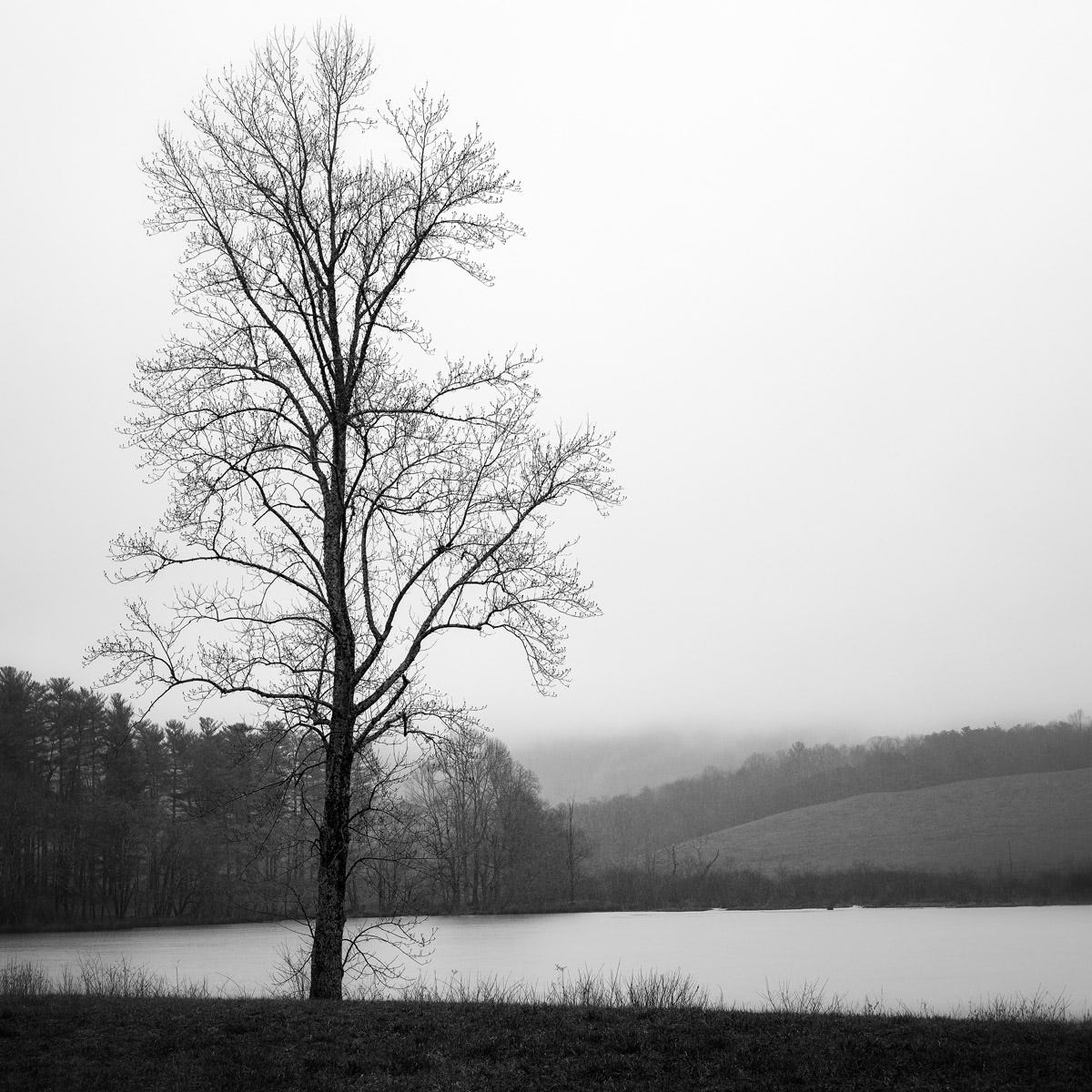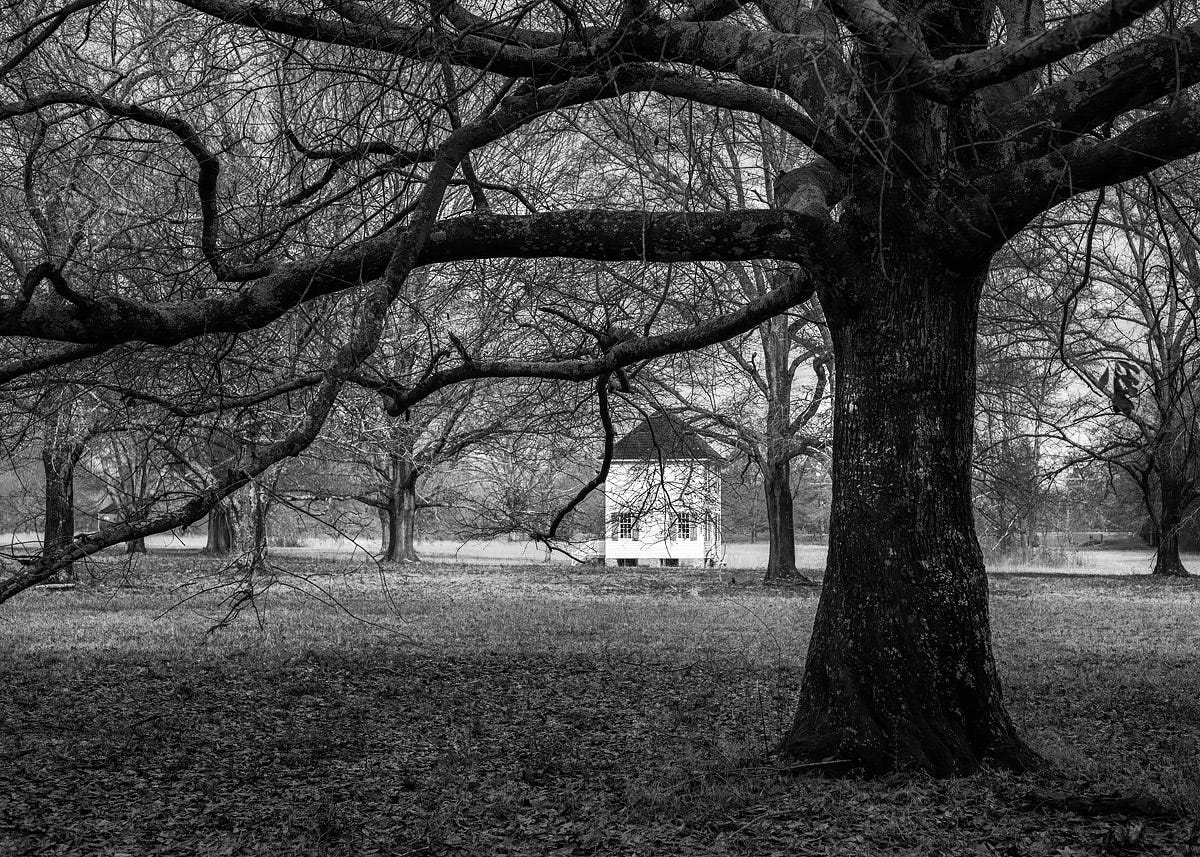The view from Woody Gap along the Appalachian Trail in North Georgia on a misty winter day. ©2021 Lee Anne White
On Thanksgiving Day, while driving to the mountains with my husband and mother for a family dinner, we had a conversation about how, unlike the week before, it looked like winter. A cold snap, wind and rain had knocked leaves from the trees and, in doing so, transformed the landscape. The brilliant reds, oranges and yellows of fall were gone. A quiet atmosphere had descended upon the land. It reminded me of Sydney Eddison’s book, The Unsung Season: Gardens & Gardeners in Winter. In it, she describes the winter landscape around her Connecticut home:
“Stripped of its leafy understory, the woodland separates into individual trees with straight, black trunks. Maples, oaks, and tulip trees—rank upon rank of them—mount the ridge, part of New England’s rocky spine.”
For a number of years now, winter has been my favorite time for making landscape photographs. Like Sydney, one of the things I love most about the winter landscape is being able to see through the trees, to track the ridgeline, and to see the form of individual trees in full. To me, this is when trees come to life, show their character, and often reveal the effects of time.
Suches Valley on a foggy morning. ©2021 Lee Anne White
In winter, the landscape is simplified, yet it simultaneously reveals more detail. It’s like seeing the “bones” of a garden in winter. What’s beneath or hidden is often revealed.
It is easier to see or at least imagine the history of the land in winter. Features that would be covered by dense vegetation in summer are often revealed once the understory dies back and leaves fall from the trees. Old homes, abandoned railroad structures, family cemeteries, terraced hillsides, and stone walls in forests that were once farmland are such features.You can also more easily follow rivers, streams and even narrow creek beds.
A replica of the 1800s Supreme Court House can be glimpsed through the trees at New Echota, once the capital of the Cherokee Nation and where the Trail of Tears began. ©2021 Lee Anne White
Here in the South, the chance of fog rises in late fall and runs through early spring. Fog, too, has a way of simplifying the landscape and creating mood in photographs. On clear winter days, there is a uniquely different, appealing quality to the light. And because it is lower in the sky, it creates longer, more interesting shadows.
In winter, I often have the landscape to myself. Parks that are packed with people in summer can be deserted in winter. There is less traffic on backroads. That means fewer distractions and a quieter setting in which to slow down, look at and think about the landscape. Making photographs when others don’t helps make my work different.
Sydney notes that “Garden pleasures don’t stop when the leaves fall.” That’s true of photography pleasures, too. So bundle up good, grab your camera, and go see what you can find to photograph in the unsung season, the winter landscape.
This is the first newsletter sent directly from my new host, Substack. I hope you’ll like the changes, including the ability to post comments and share the newsletter with others you think might be interested. If this did not arrive in your inbox, you can subscribe for free here:
upcoming workshops
Photographing Plants in the Studio, a four-week online course, starts in just a few weeks. Learn how to set up a small or portable studio for photographing plants and natural objects indoors—a fun practice any time of year and a sanity saver in winter. Classes begin the first week of January. Work on your own schedule and at your own pace.
Crash Course in Photographic Creativity. Get your creative juices flowing and have some fun playing with the camera to discover new ways of seeing. Three Thursdays on Zoom beginning February 23. Register through Maine Media Workshops.






